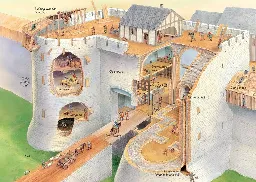

Nobody in the 1910s would be caught dead outside without a hat though.


Nobody in the 1910s would be caught dead outside without a hat though.


Indeed they did! For example this fancy room: https://c8.alamy.com/comp/2RGD7JF/the-strand-palace-hotel-the-strand-london-the-writing-room-2RGD7JF.jpg
Or, with the double desks featured in this comic, but somewhat less fancy: https://www.cardcow.com/images/set1016/card00039_fr.jpg


And, of course, a spittoon.


This is completely true. Surely you’ve heard of descending babies? This one just descended a bit more than average.


This sounds rather bad for Open Transport Tycoon Deluxe (https://www.openttd.org/)
How to quickly lose your job.
This guy is why all the safety books say things like “No open fire, or the appearance of open fire”.
There’s a reason the life expectancy of chemists is roughly 10 years less than the rest of humanity. It does get skewed by all the people who did moronic stuff like cleaning tables with benzene, but that’s not the only reason.
Additionally, cyanide toxicity is mostly something that happens over time. Unproccesed Cassava will kill you, but not after the first meal.
He also tasted it too.
My MSDS says oral LD50 for cyanide is 4mg/kg in rats. So, for an 80kg thats roughly 6 drops of pure cyanide. You can’t really buy pure cyanide, but you can get calcium or potassium cyanide. But I’m not very sure if i’m willing to risk about 1/10th of a lethal dose our of curiosity…
Yes, a potential future application, in a system where we basically always have more renewable electricity than we can use could see some great hydrogen-based storage in hydrogen.
But that’s not the world we live in today.
Hydrogen is just worse natural gas. They crack natural gas to produce hydrogen, and its fucking terrible. Hydrogen creates about 4 times more CO2 than diesel, simply by how the vast majority of it is manufactured


I mean, it was not-terrible for most of it (not counting the quality of dialogue), just not this exact scene, which was absolutely fucking terrible, and barely even involved the character in question. I really can’t imagine how they thought “Other people should talk about their gender!” was a good idea.


Why is there a small planter of rocks? It’s not like they can throw through those holes…


Yeah, but the one top (Chad position) looks sexy as hell, while the one on the bottom looks like someone kitbashed it from sprue frames


Parking at the side or front is for when you drive there in your own car, and then get in your friend’s car for the movie.


Yeah, someone with the name “dragonfucker” using “drag” as a first person pronoun definitely doesn’t have the benefit of the doubt in my book.
And if you list your pronouns, you are in fact asking others to use them. I don’t give a solitary shit what you call me, hence there not being any pronouns next to my name.


I’ve always assumed the dongle uses bluetooth as well. Why invent a new protocol when there’s one that does exactly what you want?


That seems really useful for when an enemy drone is low enough to see, slow enough to track it for 10 seconds and not really doing anything.


Well, sort of. You want to get a good bit inside the waterbearing layer, and since that’s waterbearing, it tends to flow. And that makes the dirt on top of it collapse, which is makes even a stable slope slide down and kill you.
But it really doesn’t make sense to dig like this, because this is a LOT of digging to make what is in the end, a very narrow hole.
Normally you’d make a small hole, place a perforated tube inside, then get inside and start digging down. As you remove dirt from under the ring and inside the hole, the ring slides down, and the people on top extend it upwards. Then, ideally, you seal the bottom of the well with something like clay so your water doesn’t get too muddy, and you’re good to go!
Not in the Netherlands. Nobody will speak dutch to you, and will switch to English immediately if they detect an accent.